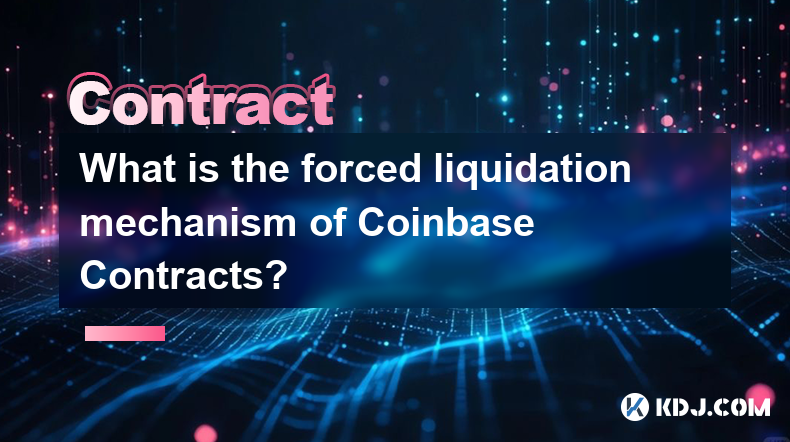-
 Bitcoin
Bitcoin $84,458.2036
-0.44% -
 Ethereum
Ethereum $1,590.0364
0.49% -
 Tether USDt
Tether USDt $0.9999
-0.01% -
 XRP
XRP $2.0691
0.09% -
 BNB
BNB $593.2274
0.59% -
 Solana
Solana $133.5196
-0.43% -
 USDC
USDC $1.0000
0.01% -
 Dogecoin
Dogecoin $0.1579
1.49% -
 TRON
TRON $0.2400
-3.14% -
 Cardano
Cardano $0.6272
1.49% -
 UNUS SED LEO
UNUS SED LEO $9.2185
1.51% -
 Chainlink
Chainlink $12.5740
0.44% -
 Avalanche
Avalanche $19.1540
0.95% -
 Toncoin
Toncoin $2.9843
1.53% -
 Stellar
Stellar $0.2398
-0.13% -
 Shiba Inu
Shiba Inu $0.0...01228
4.27% -
 Hedera
Hedera $0.1647
1.20% -
 Sui
Sui $2.1166
0.11% -
 Bitcoin Cash
Bitcoin Cash $338.3000
0.82% -
 Polkadot
Polkadot $3.6885
2.06% -
 Hyperliquid
Hyperliquid $17.1787
0.48% -
 Litecoin
Litecoin $75.9065
1.38% -
 Dai
Dai $1.0000
0.01% -
 Bitget Token
Bitget Token $4.4127
1.00% -
 Ethena USDe
Ethena USDe $0.9992
0.01% -
 Pi
Pi $0.6253
1.46% -
 Monero
Monero $215.3962
-0.44% -
 Uniswap
Uniswap $5.1845
0.33% -
 Pepe
Pepe $0.0...07212
-0.31% -
 OKB
OKB $50.2742
-0.42%
What is the forced liquidation mechanism of Coinbase Contracts?
Coinbase Contracts automatically liquidates leveraged positions when margin falls below the maintenance requirement, protecting the platform and other users from cascading losses; liquidation price depends on market conditions and leverage.
Mar 19, 2025 at 05:14 pm

Key Points:
- Coinbase Contracts uses a mark-to-market liquidation system, triggered when your position's margin falls below the maintenance margin requirement.
- Liquidation is automated to protect the platform and other users from significant losses.
- The liquidation price depends on market conditions and your leverage.
- You can minimize the risk of liquidation by managing your leverage, position size, and monitoring market volatility.
- Understanding the liquidation process is crucial for responsible trading on Coinbase Contracts.
What is the forced liquidation mechanism of Coinbase Contracts?
Coinbase Contracts employs a forced liquidation mechanism to protect the platform's financial stability and the interests of other traders. This mechanism automatically closes a trader's position when the margin available to support that position falls below a predefined threshold, known as the maintenance margin. This is a crucial aspect of managing risk within a leveraged trading environment. The goal is to prevent significant losses that could cascade through the system.
How does the mark-to-market liquidation system work?
Coinbase Contracts uses a mark-to-market system. This means your position's value is constantly reassessed based on the current market price. If the value of your position declines significantly, reducing your margin below the maintenance margin, the liquidation process is initiated. The system continuously monitors your position and triggers liquidation automatically, preventing further losses. This automation is key to the system's efficiency.
What is the maintenance margin requirement?
The maintenance margin is the minimum amount of equity (margin) required to maintain an open position. This percentage is set by Coinbase Contracts and varies depending on the specific cryptocurrency and leverage used. A higher leverage ratio implies a lower maintenance margin percentage, increasing the risk of liquidation. Understanding this relationship is crucial for effective risk management. You should always check the specific requirements for your trades.
What happens during a liquidation?
When your position's margin falls below the maintenance margin, Coinbase Contracts automatically liquidates part or all of your position. The system aims to recover as much of the margin debt as possible by selling your assets at the prevailing market price. The speed of liquidation depends on market conditions; rapid price movements can impact the outcome. The platform aims to minimize losses, but some losses are unavoidable.
How is the liquidation price determined?
The liquidation price isn't a fixed value. It's determined dynamically based on market conditions at the time of liquidation. Volatility plays a significant role; during periods of high volatility, your position might be liquidated at a price significantly different from your entry price, resulting in larger losses. This unpredictable element underscores the importance of careful risk management.
What factors affect the likelihood of liquidation?
Several factors contribute to the risk of liquidation. These include:
- Leverage: Higher leverage magnifies both profits and losses, significantly increasing the likelihood of liquidation.
- Position Size: Larger positions require more margin, making them more susceptible to liquidation during market fluctuations.
- Market Volatility: Increased market volatility makes positions more vulnerable to rapid price swings, triggering liquidation.
- Slippage: The difference between the expected price and the actual execution price during liquidation can impact losses.
How can I avoid liquidation?
Avoiding liquidation requires proactive risk management strategies:
- Use lower leverage: Lower leverage reduces the impact of market fluctuations on your margin.
- Manage position size: Avoid overly large positions that might exceed your risk tolerance.
- Monitor market volatility: Be aware of market conditions and adjust your positions accordingly.
- Use stop-loss orders: Stop-loss orders automatically close your position when the price reaches a predetermined level, limiting potential losses.
- Add more margin: If your margin is approaching the maintenance margin, add more funds to your account to increase your buffer.
What happens to my funds after liquidation?
After liquidation, any remaining funds in your account after covering the margin debt will be available for trading. If the liquidation doesn't fully cover the debt, you will have a negative balance. Coinbase Contracts will usually provide a notification outlining the details of the liquidation and any remaining balance. It's essential to review these details carefully.
Can I prevent liquidation?
While you can't entirely prevent liquidation, you can significantly reduce its likelihood through careful risk management and adherence to best practices. Understanding the factors affecting liquidation and employing appropriate strategies are crucial for responsible trading.
Frequently Asked Questions:
Q: What is the difference between liquidation and margin call?
A: A margin call is a warning that your margin is nearing the maintenance margin. Liquidation is the automatic closure of your position when the margin falls below the maintenance margin.
Q: Can I manually close my position before liquidation?
A: Yes, you can manually close your position at any time to avoid potential liquidation.
Q: What happens if I have multiple positions?
A: Coinbase Contracts will liquidate positions based on a priority system, usually starting with positions most at risk of liquidation.
Q: Is there a fee for liquidation?
A: Coinbase Contracts might charge fees associated with the liquidation process, depending on the platform's fee structure.
Q: Where can I find more information about Coinbase Contracts' liquidation policy?
A: You should refer to the official Coinbase Contracts website and user agreement for the most up-to-date and detailed information on their liquidation policy. This information is regularly updated, so consulting the source directly is important.
Disclaimer:info@kdj.com
The information provided is not trading advice. kdj.com does not assume any responsibility for any investments made based on the information provided in this article. Cryptocurrencies are highly volatile and it is highly recommended that you invest with caution after thorough research!
If you believe that the content used on this website infringes your copyright, please contact us immediately (info@kdj.com) and we will delete it promptly.
- 5 Cryptos That Aren't Sleeping Anymore. From Wall Street Warming Up to Tokenized Assets
- 2025-04-19 07:20:13
- Litecoin (LTC) Returns to Familiar 10x Territory: How High Could It Go This Time?
- 2025-04-19 07:20:13
- Hashkey Group is Moving to Increase its Presence in the Growing ETF Market of Asia. By Launching an XRP-Targeted Fund
- 2025-04-19 07:15:13
- Berachain (BERA) Price Crashes to a Record Low as Stablecoins in Its Ecosystem Continue Their Recent Plunge
- 2025-04-19 07:15:13
- United States asset manager Canary Capital has filed to list an exchange-traded fund (ETF) holding the Tron blockchain network's native token
- 2025-04-19 07:10:13
- XRP price hovers above $2.08 as traders weigh conflicting signals from spot and derivatives markets, suggesting short-term indecision.
- 2025-04-19 07:10:13
Related knowledge

How does Tail Protection reduce the loss of liquidation?
Apr 11,2025 at 01:50am
Introduction to Tail Protection in CryptocurrencyTail Protection is a mechanism designed to mitigate the risks associated with liquidation in cryptocurrency trading. Liquidation occurs when a trader's position is forcibly closed by the exchange due to insufficient margin to cover potential losses. This often happens in leveraged trading, where traders b...

What are the consequences of an imbalance in the long-short ratio?
Apr 13,2025 at 02:50pm
The long-short ratio is a critical metric in the cryptocurrency trading world, reflecting the balance between bullish and bearish sentiments among traders. An imbalance in this ratio can have significant consequences on the market dynamics, affecting everything from price volatility to trading strategies. Understanding these consequences is essential fo...

How to judge the market trend by the position volume?
Apr 11,2025 at 02:29pm
Understanding how to judge the market trend by position volume is crucial for any cryptocurrency trader. Position volume, which refers to the total number of open positions in a particular cryptocurrency, can provide valuable insights into market sentiment and potential price movements. By analyzing this data, traders can make more informed decisions ab...

Why does a perpetual contract have no expiration date?
Apr 09,2025 at 08:43pm
Perpetual contracts, also known as perpetual futures or perpetual swaps, are a type of derivative product that has gained significant popularity in the cryptocurrency market. Unlike traditional futures contracts, which have a fixed expiration date, perpetual contracts do not expire. This unique feature raises the question: why does a perpetual contract ...

Why is the full-position mode riskier than the position-by-position mode?
Apr 13,2025 at 03:42pm
Why is the Full-Position Mode Riskier Than the Position-by-Position Mode? In the world of cryptocurrency trading, the choice between full-position mode and position-by-position mode can significantly impact the risk profile of a trader's portfolio. Understanding the differences between these two modes is crucial for making informed trading decisions. Th...

How is the liquidation price calculated?
Apr 12,2025 at 01:35am
Introduction to Liquidation PriceLiquidation price is a critical concept in the world of cryptocurrency trading, particularly when dealing with leveraged positions. Understanding how this price is calculated is essential for traders to manage their risk effectively. The liquidation price is the point at which a trader's position is forcibly closed by th...

How does Tail Protection reduce the loss of liquidation?
Apr 11,2025 at 01:50am
Introduction to Tail Protection in CryptocurrencyTail Protection is a mechanism designed to mitigate the risks associated with liquidation in cryptocurrency trading. Liquidation occurs when a trader's position is forcibly closed by the exchange due to insufficient margin to cover potential losses. This often happens in leveraged trading, where traders b...

What are the consequences of an imbalance in the long-short ratio?
Apr 13,2025 at 02:50pm
The long-short ratio is a critical metric in the cryptocurrency trading world, reflecting the balance between bullish and bearish sentiments among traders. An imbalance in this ratio can have significant consequences on the market dynamics, affecting everything from price volatility to trading strategies. Understanding these consequences is essential fo...

How to judge the market trend by the position volume?
Apr 11,2025 at 02:29pm
Understanding how to judge the market trend by position volume is crucial for any cryptocurrency trader. Position volume, which refers to the total number of open positions in a particular cryptocurrency, can provide valuable insights into market sentiment and potential price movements. By analyzing this data, traders can make more informed decisions ab...

Why does a perpetual contract have no expiration date?
Apr 09,2025 at 08:43pm
Perpetual contracts, also known as perpetual futures or perpetual swaps, are a type of derivative product that has gained significant popularity in the cryptocurrency market. Unlike traditional futures contracts, which have a fixed expiration date, perpetual contracts do not expire. This unique feature raises the question: why does a perpetual contract ...

Why is the full-position mode riskier than the position-by-position mode?
Apr 13,2025 at 03:42pm
Why is the Full-Position Mode Riskier Than the Position-by-Position Mode? In the world of cryptocurrency trading, the choice between full-position mode and position-by-position mode can significantly impact the risk profile of a trader's portfolio. Understanding the differences between these two modes is crucial for making informed trading decisions. Th...

How is the liquidation price calculated?
Apr 12,2025 at 01:35am
Introduction to Liquidation PriceLiquidation price is a critical concept in the world of cryptocurrency trading, particularly when dealing with leveraged positions. Understanding how this price is calculated is essential for traders to manage their risk effectively. The liquidation price is the point at which a trader's position is forcibly closed by th...
See all articles
























































































